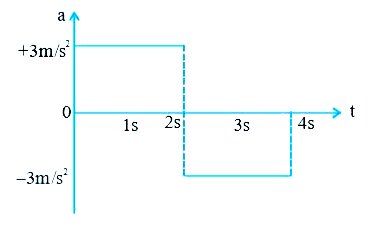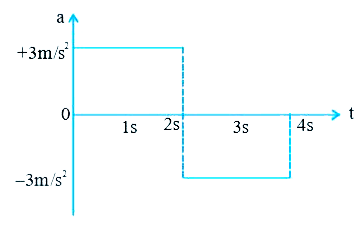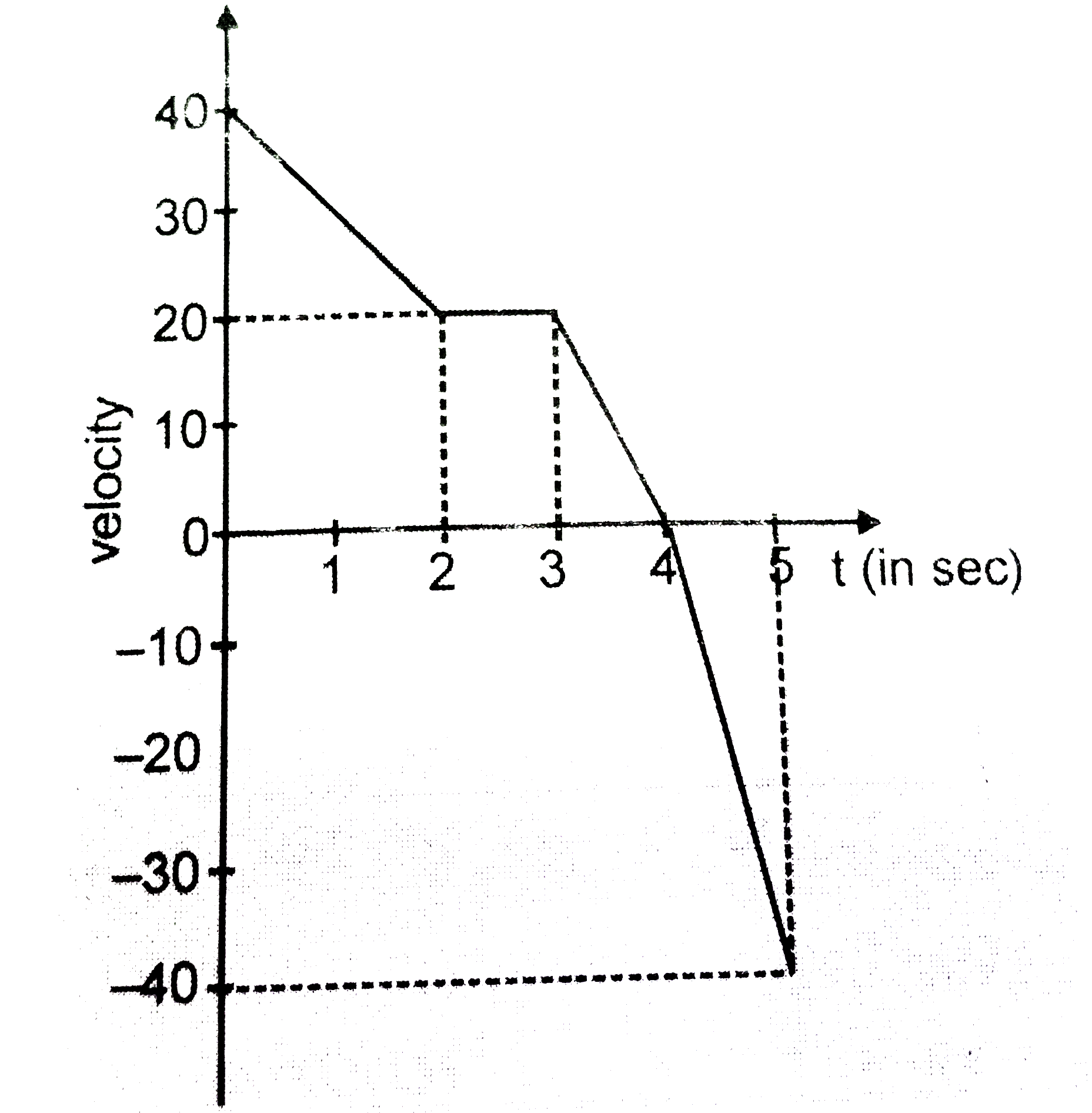
A two stage rocket is fired vertically upward from rest with acceleration as shown in a-t graphs. After 15 sec, the first stage burns out and second stage ignites. Choose the INCORRECT statement regarding motion of rocket in the time interval 0≤t≤40s.
at t=15 sec, the speed of rocket is 15.0m/s
At t=20 sec, the speed of rocket is 300m/s
In time interval t=0 sec to t=15 sec, the distance travelled by rocket is 750 m.
in time interval t-0 sec to t=20 sec, the distance travelled by rocket is 1500 m.
The correct Answer is:D
v⎧⎨⎩2t29ˆjif 0≤t≤15sec150+150(5−15)+15(t−15)2ˆjif 15s≤t≤40s
at t=15
r=2×15×15×153×3=750m
Topper's Solved these Questions
- BOOK - FIITJEECHAPTER - TEST PAPERSEXERCISE - PHYSICS747videos
TEST PAPERS
- BOOK - FIITJEECHAPTER - SIMPLE HARMONIC MOTIONEXERCISE - Assignment Problems (Objective) (Level-II)20videos
SIMPLE HARMONIC MOTION
- BOOK - FIITJEECHAPTER - WORK, ENERGY AND POWER EXERCISE - COMPREHENSIONS ( Comprehension-II)5videos
WORK, ENERGY AND POWER
Similar Questions
A rocket is fired vertically from the ground. It moves upwards with a constant acceleration 10m/s2 after 30 sec the fuel is finished. After what time from the instant of firing the rocket will attain the maximum height? g=10m/s2:-
View SolutionA rocket is launched from the suface of the earth vertically upward from rest. It moves under acceleration 8m/s2. After 15 s the fuel is finished, the rocket moves under gravity and ultimately strickes the ground. Assuming upward direction position and launching point as the origin, sketch the v-t, s-t and a-t graph.
View SolutionA prototype of a rocket is fired from the ground. The rocket rises vertically up with a uniform acceleration of 54m/s2. 8 second after the start a small nut gets detached from the rocket. Assume that the rocket keeps rising with the constant acceleration.
(a) What is the height of the rocket at the instant the nut lands on the ground
(b) Plot the velocity – time graph for the motion of the nut after it separates from the rocket till it hits the ground. Plot the same velocity– time graph in the reference frame of the rocket. Take vertically upward direction as positive and g=10m/s2View SolutionA rocket is fired vertically up from the ground with an acceleration 10 m/s2. If its fuel is finished after 1 minute then calculate -
(a) Maximum velocity attained by rocket in ascending motion.
(b) Height attained by rocket fuel is finished.
(c ) Time taken by the rocket in the whole motion.
(d) Maximum height attained by rocket.View SolutionA particle starts from rest at t=0 and undergoes an acceleration as shown in figure.
Draw the velocity-time graph of the motion of the particle during the interval from zero to 4 second.
 View Solution
View SolutionTwo bodies are projected vertically upwards from one point with the same initial velocity v0. The second body is projected t0s after the first. How long after will the bodies meet?
View SolutionA rocket is fired vertically upwards with a net acceleration of 4m/s2 and initial velocity zero. After 5s its fuel is finished and it decelerates with g. At the highest point its velocity becomes zero. Then, it accelerates downwards with acceleration g and return back to ground. Plot velocity-time and displacement -time graphs for the complete journey. Take g=10m/s2.
View SolutionA particle starts from rest at t=0 and undergoes an acceleration as shown in figure.
Draw the displacement-time graph of the motion of the particle during the same time interval. In both the above cases, explain the various steps.
 View Solution
View SolutionA rocket with an initial mass of 1000kg, is launched vertically upward from rest under gravity. The rocket burns fuel at the rate of 10kg per second. The burnt matter is ejected vertically downwards with a speed of 2000m/s relative to the rocket . Find the velocity of the rocket after 1min of start.
View SolutionA particle starts motion from rest and moves along a straight line. Its acceleration-time graph is shown. Find out speed of particle at t=2s and at t=3s.
 View Solution
View Solution

